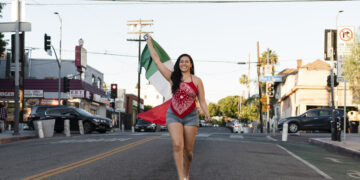Introduction
Every now and then, an image freezes in time and seems to tell a thousand stories without a single word. The “Mar a Lago face” is one such moment. Captured in an instant, it sparked debate, curiosity, humor, and political commentary all at the same time. The face isn’t just an expression—it’s a snapshot of context, personality, and circumstance. It’s one of those public images that end up weaving themselves into modern political culture without anyone expecting it.
The Setting
Mar-a-Lago is more than just a private estate—it’s a stage. Built in the 1920s in Palm Beach, Florida, it has served as a historic mansion, a private club, and in recent years, a political gathering point. From diplomatic dinners to press events, the estate has hosted moments that often wind up in the headlines. Against this backdrop, the “Mar a Lago face” emerged. The estate’s high-profile gatherings mean its guests, and especially its most recognized resident, are under constant observation. That constant camera presence sets the stage for any unscripted reaction to instantly become news.
The Origin of the Face
The expression labeled the “Mar a Lago face” did not appear with any grand introduction. It came about in a candid moment during a high-attention event, caught by photographers and swiftly published in news outlets. Many recall it as an expression where emotion met circumstance—perhaps a flash of discomfort, disapproval, or sharp reaction to something happening off-camera. Almost immediately, it began circulating on social platforms. People zoomed in, speculated about the cause, and added their own interpretations, giving it a life beyond the original context.
Reading the Expression
Human faces are remarkable storytellers. This particular expression became a canvas for interpretation—was it frustration? A pause before a response? Or simply a fleeting second of concentration? Body language experts noted that facial tensions, eye direction, and lip movement can convey more than words. The “Mar a Lago face” proved that even without knowing exactly what had just been said or done, a single image could spark countless theories.
The Internet Effect
Once the image reached social media, the “Mar a Lago face” became content. Memes exaggerated it, captions reimagined it, and users shared it in unrelated contexts just for humor. This rapid reshaping of meaning is how online culture works—what begins as a candid moment can turn into a symbol, parody, or emotional shorthand in just hours. The spread was fueled by its clarity and uniqueness; people instinctively recognized it and connected it to a certain tone or situation in their own lives.
Why It Resonated
The power of the “Mar a Lago face” lies in how ordinary expressions can take on extraordinary meaning when placed in a public figure’s world. It becomes a shared cultural reference point. The image tapped into both supporters and critics, each reading it through their own perspectives. Supporters found it relatable, a moment of unfiltered authenticity. Critics used it to underline their own narratives. In both cases, the image served as a mirror for personal biases and interpretations.
Symbolism Over Time
Months after its first surge online, the “Mar a Lago face” still surfaced in political conversation. It had shifted from simply being “a funny face” to a piece of visual shorthand for a mood, a stance, or even a type of reaction. In political commentary, symbolism often works this way—small moments become reference points that outlast the event itself. Over time, it became less about the actual moment it was taken and more about what it came to represent.
Public Response
Live reactions to the face varied widely. Some audiences saw warmth, others saw disapproval; interpretations were subjective. Television segments discussed it briefly, while magazines used it in features about political optics. What was striking was how an expression, which in everyday life might go unnoticed, could become a headline topic when associated with a recognizable figure in such a distinctive setting.

Media Framing
News photography often gives priority to dramatic or telling visuals, even for lighthearted pieces. The “Mar a Lago face” fit into this editorial instinct perfectly. It told a visual story without needing captions. Critics argue that this can distort genuine communication, as isolated expressions might suggest sentiments that aren’t truly there. Supporters of visual media counter that it’s part of the job—capturing moments that speak louder than scripted lines.
Lessons in Perception
One clear lesson from the “Mar a Lago face” phenomenon is the undeniable influence of perception. Context matters, but so does imagination. People often project their feelings, opinions, or expectations onto an image. This is why two individuals can look at the exact same photo and walk away with completely different impressions. It’s a reminder that public life comes with the challenge of having every detail open to interpretation.
Cultural Relevance
Our collective memory often holds onto moments that are both visually striking and culturally charged. The “Mar a Lago face” checks both boxes. It exists not just as part of a photographic archive, but as a reference we bring up in conversation, satire, and political storytelling. It illustrates how culture today is a mix of traditional media framing and the spontaneous creativity of online audiences.
What People Mean by “Mar‑a‑Lago Face”
The term “Mar‑a‑Lago face” isn’t an official label—it’s internet slang. In practice, it refers to a widely shared photo (or a handful of closely related photos) taken at Mar‑a‑Lago, Donald Trump’s residence and private club. In that image, Trump’s expression—depending on who’s captioning it—gets interpreted as angry, stunned, grim, exhausted, or defiant. The expression took on a life of its own, becoming a meme used to comment on broader political developments.
A few key points about how this kind of shorthand emerges:
- It’s a meme device. The internet loves catchy, compact labels that travel fast. “Mar‑a‑Lago face” compresses a visual event, location, and emotion into three words.
- It’s context‑dependent. Many people use the term to refer to the photo that was trending in their network at a particular moment. That means there can be multiple “Mar‑a‑Lago face” candidates over time.
- It’s interpretive by design. The phrase invites projection—viewers read into it what they expect or want to see, aligning with their politics or sense of humor.
Bottom line: “Mar‑a‑Lago face” is less a single, definitive artifact and more a social media placeholder for a striking expression captured at Mar‑a‑Lago that people can remix and debate.
When and Where Was the Photo Taken?
Because “Mar‑a‑Lago face” is used loosely, identifying the exact moment can be tricky. The name points to the location—Mar‑a‑Lago, in Palm Beach—but not to a specific date. Several high‑profile events at the club have produced images that could fit the label.
Multiple Candidates Share the Same Nickname
Across recent years, photographers and attendees have captured candid and formal images at Mar‑a‑Lago during:
- Watch parties and gatherings following major political news.
- Formal announcements and speeches.
- Post‑court‑appearance remarks delivered at the club.
- Fundraisers, seasonal galas, or private dinners.
In each context, a single frame—caught between facial movements—can look dramatically different from the overall mood of the event. That’s how a photo becomes the face of a news cycle: it feels emblematic, even if it’s a split second.
How to Verify the Original Event and Timestamp
If you want to verify which specific image your feed is calling the “Mar‑a‑Lago face,” use a quick provenance checklist:
- Reverse image search. Upload the image to a reverse image search tool to find the earliest postings and original sources.
- Look for wire service credits. Photos credited to Associated Press, Reuters, Getty, or AFP typically include captions with time, date, event, and location.
- Compare angles. If multiple photographers covered the same event, you’ll see similar frames from slightly different vantage points.
- Check primary video. Locate video of the same moment; expressions that look one way in a still may read differently in motion.
- Examine EXIF data when available. Original files sometimes retain metadata with time and device info (though social platforms usually strip this).
This approach keeps you grounded in verifiable facts—and helps you avoid recycled images being passed off as “new.”
What Did That Expression Mean—Anger, Surprise, or Something Else?
We’re hardwired to read faces. But interpreting emotion from a single still photo is notoriously unreliable. Lighting, angle, timing, and our own expectations all color what we think we see.
What Facial Cues Suggest
Observers might latch onto cues like:
- Forehead and brow tension suggesting concentration or frustration.
- Compressed lips signaling restraint or determination.
- Open mouth implying surprise, mid‑word speech, or a breath.
- Narrowed eyes indicating scrutiny, glare, or simply bright lights.
- Head tilt and chin set implying defiance or bracing.
Any one of these signals can point to multiple, competing emotional states. For example, narrowed eyes could be a glare—or just squinting against stage lights.
Why Reading Emotions from Still Images Is Tricky
- Microseconds matter. A face while speaking passes through dozens of micro‑expressions each second. Freeze at the right micro‑moment and nearly anyone looks intense, weary, or exasperated.
- Context shapes meaning. The same expression after applause reads differently than after a tough question.
- Lens and lighting distort. Wide‑angle lenses exaggerate features. Harsh light deepens shadows, accentuating lines and making neutral expressions look severe.
- Caption bias. If a photo is captioned “stunned,” many viewers will perceive it that way. Change the caption to “steely resolve,” and the same face may feel inspiring to others.
The Most Responsible Interpretation
Without live video and reliable context, the most defensible read of a “Mar‑a‑Lago face” image is descriptive, not diagnostic—e.g., “brows lowered, lips pressed, gaze forward.” Assigning a precise inner emotion (anger, shock, fear) is speculative. That doesn’t mean the image is meaningless; it means we should stay humble about what a still photo can prove.
Why Did the Image Go Viral?
Virality isn’t random. Certain attributes make an image primed to spread, and “Mar‑a‑Lago face” checks several boxes.
The Meme Recipe
- High recognizability. A famous subject guarantees instant attention.
- Emotional ambiguity. Ambiguous faces invite debate and reinterpretation, fueling engagement.
- Narrative timing. If the photo surfaces during a consequential news beat, it becomes a visual shorthand for the moment.
- Contrast and novelty. Seeing a public figure in a candid, unguarded split‑second contrasts with their polished persona.
- Meme‑ability. Simple crops and clear facial features make it easy to remix with captions and reaction formats.
The Algorithmic Push
- Engagement signals. Strong comments and reshares in the first minutes cue algorithms to push the image to larger audiences.
- Polarization effect. Controversial images generate more comments—positive and negative—which platforms often treat as a sign of relevance.
- Cross‑platform echoes. A hit on one platform gets screenshotted and recycled elsewhere, compounding reach.
By the time the image hits latecomer feeds, it’s no longer just a photo—it’s a symbol, a punchline, and a proxy for a broader argument.
What Is Mar‑a‑Lago and Why Does It Matter?
Mar‑a‑Lago is both a place and a symbol, and that dual role shapes how people react to images from the club.
- Private club and residence. Located in Palm Beach, Mar‑a‑Lago serves as Donald Trump’s residence and the hub of myriad political and social gatherings.
- Stage for political theater. Since leaving the White House, Trump has used Mar‑a‑Lago as a venue for announcements, fundraising, and post‑event remarks.
- Cultural shorthand. The estate’s visual style—gilded interiors, chandeliers, Spanish‑Mediterranean architecture—broadcasts opulence. In media narratives, that aesthetic evokes themes of wealth, power, and spectacle.
- Site of controversy. The property has featured prominently in several high‑profile news stories, shaping public perceptions and ensuring that imagery from there carries extra symbolic weight.
Because Mar‑a‑Lago is so recognizable and charged with political meaning, photos taken there don’t read as neutral; they arrive preloaded with context, amplifying whatever viewers think the “face” conveys.
Is There a Hidden Backstory Behind the Photo?
Online, mysterious backstories are catnip. People want to believe there’s a secret reason for a moment—that the expression reveals something the public wasn’t meant to see. Sometimes, though, the simplest explanation is best.
The Mundane Reality Behind Dramatic Frames
Consider the most common, non‑mysterious reasons a dramatic political photo exists:
- Mid‑speech artifacts. A speaker caught between syllables will look surprised, angry, or pained in a random frame.
- Light and sweat. Stage lights, Florida humidity, and TV makeup interact in ways that camera sensors exaggerate.
- Split‑second timing. Photographers fire bursts specifically to capture micro‑moments with maximum drama.
- Cropping choices. Removing background context isolates the face, intensifying any implied emotion.
How Cropping, Lighting, and Lenses Create Drama
- Cropping. Tight crops eliminate visual cues (audience, teleprompters, a glass of water) that would soften interpretation.
- White balance and saturation. Color tweaks can deepen reds and oranges, altering how skin tone and mood are perceived.
- Focal length. Wide lenses up close can subtly distort proportions, making expressions appear sharper.
What We Can Responsibly Conclude—and What We Can’t
- Likely true: The photo shows a candid expression at a real event at Mar‑a‑Lago.
- Likely true: The image was selected and shared because it felt emblematic to those promoting it.
- Not provable from the image alone: The exact inner emotion, any off‑camera trigger, or a secret motive.
If someone claims a hidden story, ask for evidence: original footage, multiple angles, or credible sourcing beyond a caption or tweet.
Why Do People Interpret the Same Face So Differently?
Two viewers can look at the same frame and see totally different things. That’s not just politics; it’s psychology.
Projection and Motivated Reasoning
- Confirmation bias. We notice details that support what we already believe and discount those that don’t.
- Motivated perception. If we want to see weakness, we’ll see defeat; if we want to see resolve, we’ll see courage.
- Identity cues. Party identity acts like a filter; in‑group/out‑group dynamics intensify subjective readings.
Cultural and Linguistic Framing
- Metaphors matter. Words like “meltdown,” “comeback,” or “grim” prime the brain to perceive matching emotions.
- Humor styles. Irony‑heavy communities will read the face as fodder for jokes; earnest communities may read it as proof of character.
The Power of Captions
Captions operate like a director’s commentary. Studies show that minimal text can dramatically shift perceived emotion in an otherwise ambiguous photo. The same “Mar‑a‑Lago face” with “stunned” versus “steely” captions generates different comment threads—and different virality trajectories.
Did the Media Exaggerate the Moment?
Media ecosystems reward the most clickable interpretation of a frame. That doesn’t mean fabrication, but it does mean selective emphasis.
Headlines vs. Wire Captions
- Wire services. Photojournalists and wire agencies tend to provide straightforward captions: who, what, where, when.
- Headlines and commentary. Outlets and influencers add editorial framing. The image may be republished with narratives that lean dramatic to capture attention.
Incentives and Corrections
- Incentives. Outrage and novelty draw clicks and shares, so the spiciest still often wins the thumbnail war.
- Corrections. If a miscaption spreads—say, the photo is from a different date—retractions rarely travel as far as the original claim.
A good habit: prioritize primary captions and original video over hot‑take headlines. The truth is often more ordinary than the meme suggests.
Do Candid Images Change Public Perception?
Yes—sometimes profoundly. Visuals can stick in the collective memory in ways that articles don’t.
Historical Patterns
- The moment‑as‑metaphor effect. Certain images come to symbolize broader narratives, even if they aren’t fully representative of the person or moment.
- Availability heuristic. When people think of a figure, the most striking image they’ve seen is what pops to mind first—shaping judgments.
The Stickiness of First Impressions
- Repetition. When the same face angle circulates nonstop, it imprints. Later, new images get interpreted through that lens.
- Meme logic. Funny or biting captions retell the same story, strengthening the association between expression and trait (e.g., “angry,” “tired,” “defiant”).
That said, public figures generate thousands of images. A single candid matters most when it aligns with a preexisting media narrative or becomes a recurring reaction image.
Will This Photo Be Remembered?
Images endure when they satisfy several criteria: they’re distinct, tied to consequential events, and useful as symbols.
What Makes an Image Endure
- Iconic clarity. Strong composition and a unique expression make a photo instantly recognizable in thumbnail form.
- Historical tie‑in. Photos attached to landmark events are more likely to be revisited in retrospectives and documentaries.
- Cultural utility. If an image becomes a Swiss Army knife for reactions online, it can live on beyond the original context.
Possible Trajectories
- Short‑cycle meme. The photo spikes, gets a week of remixes, and fades.
- Recurring symbol. It resurfaces whenever a related story breaks.
- Archive staple. It becomes one of the handful of images used to illustrate the Mar‑a‑Lago era in future histories.
Predicting which path it takes depends on what happens next in the news cycle—and how consistently the image gets reused across platforms.
Practical Checklist: How to Responsibly Share Political Images
Before you repost the “Mar‑a‑Lago face” (or any viral political photo), run through this quick checklist:
- Source it: Can you find the original photographer or wire service caption?
- Time‑check it: Is the image really from the event people claim?
- Context‑check it: Is there video of the same moment you can review?
- Caption carefully: Describe what’s visible; avoid asserting inner states as facts.
- Beware edits: Look for signs of filters, saturation shifts, or AI manipulations.
- Add value: If you share, include reliable context rather than just a dunk or a cheer.
This isn’t about being humorless; it’s about being fair and accurate in a media environment that rewards speed over precision.
Conclusion
In the end, the story behind the “Mar a Lago face” isn’t just about one expression. It’s about how images travel, gather meaning, and influence perception in a digital era. It’s also about how the backdrop of Mar-a-Lago—luxurious, ceremonial, and politically significant—elevates even fleeting moments into cultural artifacts. Whether you view it as amusing, telling, or entirely overblown, one thing is certain: the “Mar a Lago face” will remain a small but vivid note in the visual history of recent American politics.
FAQs
What is the Mar a Lago face?
It’s a widely circulated photograph of a distinct expression captured at Mar-a-Lago, often tied to public commentary and online memes.
Why did the image become so popular?
Its mix of visual clarity, context, and the public recognition of the person involved made it easy for people to react, share, and reinterpret.
Was the expression intentional?
There’s no official explanation—it’s generally believed to be a candid reaction caught in the moment.
How has the image been used online?
From humor and memes to political commentary, it’s been repeatedly remixed and shared in different contexts.
Does it still get attention today?
Yes, it occasionally resurfaces whenever discussions touch on the events or people connected to Mar-a-Lago.
Quick Bio Table
| Location | Palm Beach, Florida | |
| Built | 1924–1927 | |
| Original Owner | Marjorie Merriweather Post | |
| Current Use | Private club and residence | |
| Famous For | Political events and gatherings | |
| Keywords | Mar a Lago face | |
| Style | Mediterranean Revival | |
| Size | 20 acres | |
| Notable Resident | Donald J. Trump | |
| Public Recognition | High-profile location | |
| Media Impact | Frequent news coverage | |
| Cultural Role | Symbol in political and social discourse | |
| Notable Moment | The “Mar a Lago face” image |





















































